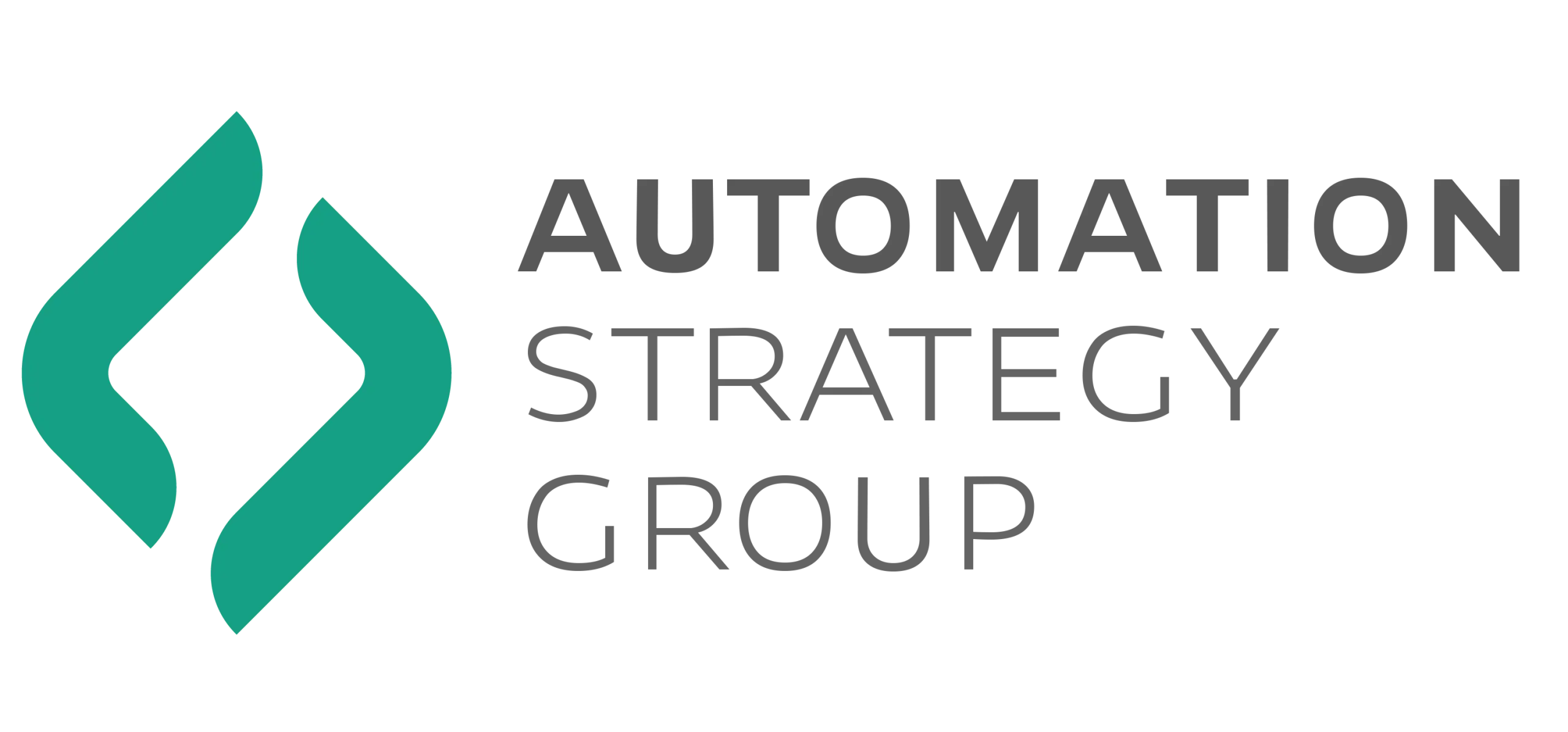Understanding the benefits of sales and marketing automation is crucial for startups and small businesses as it can help increase productivity and provide a competitive advantage in 2025.
As per the report, the global industrial automation and control systems market size is projected to reach USD 378.57 billion by 2030, growing at a CAGR of 10.8% from 2025 to 2030.
In this blog post, we’ll explore 9 strategic benefits of using sales and marketing automation, each backed by statistics and real-world use cases. Whether you’re just getting started or looking to scale, you’ll learn how to make automation work for you.
Key Benefits of Sales and Marketing Automation
- Improved Lead Generation
- Faster Lead Response Times
- Better Lead Nurturing
- Stronger Sales and Marketing Alignment
- Higher Conversion Rates
- Consistent Communication
- Better Data for Smarter Decisions
- Reduced Operational Costs
- Scalability Without Hiring More Employees
What Does Automation in Sales and Marketing Mean?
Automation in sales and marketing refers to the use of software tools to automate repetitive tasks, such as email follow-ups, lead scoring, social media scheduling, and customer segmentation, without requiring manual input.
This allows businesses to save time, reduce errors, and deliver consistent, personalised communication to prospects and customers.
Common examples of sales and marketing automation include:
- Automatically sending a welcome email when someone fills out a form
- Assigning a lead to the right sales rep based on location or interest
- Nurturing cold leads with scheduled drip campaigns
- Segmenting contacts into groups for targeted messaging
- Tracking campaign results and reporting performance through AI and Machine Learning
By utilizing marketing automation, small businesses can scale their outreach, improve follow-up speed, and focus their team’s time on strategy and relationship-building.
Key Benefits of Using Automation in Sales and Marketing
Here are the strategic benefits of sales and marketing automation for small businesses:
1. Improved Lead Generation
Generating quality leads is crucial for any sales-driven business, and automation is the modern ticket to scaling it. Through optimized workflows, behavior-triggered campaigns, and accurate segmentation, marketing and sales teams can increase their qualified lead rate over time.
According to Invesp, companies that implement automation on their website and email flows have reported a 451% boost in qualified leads. Also, 80% of automation users observed improved lead generation.
Additionally, B2B marketers noted a 10 % lift in sales pipeline contribution after automating lead nurturing in multi-step, behavior-driven sequences.
These gains come down to three key capabilities:
- Lead capture + triggering
Landing pages, forms, and gated content feed directly into workflows. For example, if someone downloads a whitepaper, they’re instantly tagged, segmented, and entered targeted email sequence. - Behavioral segmentation
Automation tools track every click, form fill, and page visit. A prospect clicking on pricing, for example, might trigger a higher-intent nurturing stream versus someone simply downloading a blog post. These smart triggers mean each lead receives the right message at the right time. - Lead scoring and routing
Scores are assigned automatically based on how people engage: +5 for opening an email, +10 for clicking a link, and +20 for downloading a case study. When someone reaches a certain score, their information is passed to sales quickly. This process reduces waste in the sales funnel, and cold leads stay in nurturing until they show interest.
Why does this matter? Today’s buyers expect timely, relevant communication. If a lead form is submitted and there’s a 24-hour delay in follow-up, you’ve already lost the advantage.
By implementing marketing automation, businesses have not only augmented their raw lead volume but also multiplied qualification rates and pipeline yield. That’s called lean scaling with maximum impact.
2. Faster Lead Response Times
In 2025, the speed at which you respond to a new inquiry can make or break a sale. Customers expect near-instant connection, and reluctant leads often turn cold while waiting.
Sales Automation platforms empower your team to respond in real time, ensuring no opportunity goes untouched.
The Harvard Business Review found that contacting a lead within one hour makes you 7× more likely to have a meaningful conversation than if you wait any longer.
Research shared by MarketingCharts shows 47% of marketers report automation helps pass leads to sales faster, keeping prospects engaged before they cool off.
How marketing automation accelerates follow-up
- Instant lead alerts
The moment someone completes a form or clicks on a campaign CTA, the system sends an alert to a sales rep. This mobile or browser notification ensures no moment is missed, even when your team is away from their desks. - Automated email or SMS replies
You can configure immediate acknowledgment messages that thank leads, provide resources, or offer scheduling links. The fast response prevents uncertainty and boosts satisfaction. - Lead assignment workflows
Through pre-set rules, i.e. by region, industry, or behavior, leads are instantly sent to the right rep. Therefore, there is no need to wait for manual assignment, which can delay action by hours or days.
For example, in HubSpot, the ability to segment and automate lead prioritization forms a core part of their inbound engine, helping sales reps focus on hot leads instantly.
3. Better Lead Nurturing
Cultivating leads isn’t a one-off task; it’s a journey. Marketing Automation paves the way for structured, data-informed nurturing that builds trust and moves prospects toward a purchase. The outcome? A more efficient pipeline and stronger customer connections.
According to Wearecatalyst, only 3% of leads are decision-ready when they first interact, while the rest require sustained nurturing.
Engaging marketing automation vendor Moosend found that businesses using drip campaigns reduced time-to-sale by 30–50%.
According to Invesp, nurtured leads make purchases that are 47% larger than leads that aren’t nurtured. Lead-nurturing emails get 4 to 10 times more responses than regular email blasts.
And, nurtured leads create a 20% increase in sales opportunities compared to non-nurtured leads.
What smart, nurturing workflows look like
- Behavior-linked content triggers
Someone downloads a case study on CRM? That click triggers a sequence: email that highlights social proof, follow with a webinar invite, and, after another click, offer a consult. Each action determines the next step. - Personalized content paths
Instead of generic emails, workflows deliver tailored messaging—e.g., segmented by industry, role, or interests. An IT manager will see product comparison content, while a finance director receives ROI-focused collateral. - Timed drip sequences
Using a mix of scheduled and event-based emails, your brand stays top of mind without hitting inbox fatigue. E.g., send a case study one day later, an e-book three days after, and a personalized follow-up a week later.
By turning ad-hoc email sequences into finely tuned nurture tracks, you can build trust, stay relevant, and shorten closure time.
4. Stronger Sales and Marketing Alignment
When sales and marketing operate in silos, opportunities are missed, and prospects are passed through gaps instead of pipelines. The benefits of sales and Marketing Automation are to bridge that divide, aligning workflows, data, and team goals into one cohesive engine.
HubSpot reports that companies with strong alignment between sales and marketing groups generate 208% more revenue from marketing efforts.
The demand generation report indicates that aligned teams experience 90% higher customer retention, due to consistent communication and fewer internal missteps.
How automation brings teams together
- Shared lead scoring and definitions
Both teams use the same criteria: e.g., a 50-plus score equals sales-ready. This avoids confusion over lead readiness and ensures marketing-generated leads are acted upon promptly. - Unified pipeline dashboards
Shared analytics provide clear visibility into how leads interact and move through the sales funnel. This means marketing teams can easily see which leads converted, while sales teams have insight into the history of lead nurturing. - Collaboration on campaign follow-up
When the marketing team launches a webinar, an automated workflow can notify sales reps of attendees 10 minutes after the event ends, with linked activity. - Automatic feedback loops
Loss reasons from sales, like “no budget,” help improve marketing efforts. This data allows us to keep our campaigns relevant and make them better over time.
For instance, a tech startup enabled bidirectional syncing between their CRM and marketing platform. Within two quarters, they eliminated misrouted leads, slashed lead reassignments by 60%, and reduced sales cycle time by 18%. Teams now share clear definitions and progress metrics.
5. Higher Conversion Rates
When you optimize every part of your sales funnel, conversion rates improve. Automation not only increases the number of leads but also speeds up the process, turning engaged prospects into customers more quickly.
The Aberdeen Group found that businesses using automation see 53% higher conversion rates than those that don’t. A report by Gleanster shows that companies with strong automation convert 15-20% more opportunities because they use timely follow-ups based on data.
Multiple industry sources report that e-commerce sites that use marketing automation have a 30% higher average order value.
Why conversions get a boost
- Data-driven insight
Automation provides click, email, and page data. You can identify what’s working, whether it’s CTA placement, email templates, or webinar invites. - Hyper-targeted follow-up
Based on actions, your leads can receive tailored messages. For example, interest in a product page triggers a demo invite; the pricing page triggers ROI content. Relevance drives conversions. - A/B testing at scale
Automation platforms allow testing subject lines, email sequences, timing, and content types. You can learn quickly what moves the needle and replicate top-performing variants.
6. Consistent Communication
One of the most common complaints customers have is inconsistent follow-up. A study by Salesforce found that 51% of customers feel most companies don’t meet their expectations for a great experience.
Businesses should understand that trust is built with consistency. Customers want reliable follow-up, on-brand messaging, and timely updates. The benefits of sales and marketing automation is to guarantee every prospect gets the attention they deserve on schedule, all the time.
That same study also found that 95% of customers are more loyal to companies they trust.
Julien Boudet from McKinsey explains that personalisation can increase revenue and improve customer acquisition and engagement by 10–30%, but only when done well. Many companies struggle to deliver the right experience at scale. Without smart tools and the right data, they risk turning customers off instead of building loyalty.
How marketing automation ensures reliability
- Welcome and onboarding sequences
New subscribers should receive an entire journey planned, i.e. introduction emails, product insights, social media links, without requiring manual effort. - Milestone and re-engagement campaigns
Businesses should automate touchpoints at 30, 60, and 90 days or trigger messages when usage dips or subscriptions lapse. - Cross-channel consistency
Whether email, SMS, in-app, or web push, automation tools ensure your brand voice and timetable remain unified. - Error elimination
Marketing Automation ensures sending scheduled messages like “thank you email”, goes out every time.
7. Better Data for Smarter Decisions
Data is only valuable if it’s accurate, timely, and actionable. The benefits of sales and marketing automation systems is to centralize and enrich your data, helping teams pivot faster, target smarter, and measure impact. Also, marketing automation platforms provide real-time insights from email open rates to sales pipeline activity.
Personalised advertising continues to outperform one-size-fits-all campaigns. 8 out of 10 consumers are more likely to interact with ads that feel tailored to them. Campaigns that use smart targeting and automation typically deliver up to 40% better returns than those managed manually.
According to Cropink, nearly 9 in 10 marketers say data-driven strategies lead to stronger ROI. Also, McKinsey notes that companies using customer analytics earn 23× more customer acquisition rates.
How automation enhances data
- Unified data dashboards
Contacts, campaigns, pipeline, conversion, all visible in one system. - Behavioral and engagement tracking
Every page click, email open, and form fill is captured automatically and linked to individual leads. - Attribution made easy
Understand which sources, campaigns, and assets are generating revenue. You can identify marketing touches that precede deal-closing. - Predictive forecasting
Some platforms enable early warning signs like deal engagement patterns or lead behavior, informing focused follow-up.
8. Reduced Operational Costs
Manual tasks are not only tedious, but they’re also expensive. According to Fireworks, businesses that adopt automation typically experience a 12% drop in overall marketing expenses due to streamlined workflows, reduced manual tasks, and better resource allocation.
By automating campaign scheduling, lead follow-ups, and customer segmentation, companies can cut unnecessary spending while still improving performance across channels.
A report by Nucleus Research shows that marketing automation returns $5.44 ROI for every dollar spent. Also, industries have found that small businesses using automation cut admin time by 30%, freeing staff for high-value work.
A blog published by BestPack highlights that marketing automation can help companies cut operational costs by as much as 90%, making it a powerful strategy for improving efficiency and saving money at scale.
What causes cost reduction
- Less manual admin work
Lead routing, follow-ups, and data entry are automated. Team members redirect time to creative and strategic tasks. - Error reduction
Human mistakes, missed emails, and wrong segments cost time and trust. Automation reduces those errors, preserving brand and relationships. - Scaled campaign support
One automated program serves thousands. You don’t need more people to send welcome flows, re-engagement, or sales sequences. - Optimized ads spend
With performance data in hand, you stop dumping budget into underperforming campaigns, saving money and improving ROI.
9. Greater Flexibility and Scalability
One of the biggest advantages of sales and marketing automation is the ability to scale your efforts without adding more people to your team. Whether you’re launching campaigns, nurturing leads, or following up with customers, automation allows you to do it faster and on a larger scale.
With the right setup, a single campaign can run across multiple channels, adapt to different audience segments, and respond to user actions in real time.
Marketing automation continues to deliver strong results for businesses of all sizes. According to the same source mentioned in the above point, 80% of users report gaining more leads, while 77% have seen a noticeable boost in conversion rates.
It’s no surprise that 91% of marketers consider automation essential to the success of their campaigns. Beyond just volume, it also improves quality. Businesses using sales and marketing automation for lead nurturing generate 20% more sales opportunities.
How growth happens
- Replicable campaigns
Once a campaign exists, for example, a webinar follow-up, you can clone and tweak it for other markets, services, or regions. - Mass personalization
Marketing automation tools merge dynamic fields such as first name, industry, and use case, creating personalized messaging at scale. - Template-based efficiency
Email templates, landing pages, nurture paths, and workflows can be reused and modified with minimal effort. - Integrations that multiply capacity
You can integrate CRM, analytics, e-commerce, AI agents and chatbots in one place so that leads and data flow seamlessly.
How Can Automation Strategists Help?
At Automation Strategists, we help businesses unlock the full potential of sales and marketing automation. But we don’t believe in one-size-fits-all systems. We take the time to understand your business, your goals, and your customer journey, then build automation strategies that work for you.
Here’s how we can help:
- Audit your current sales and marketing workflows
- Select and set up the right tools for your needs
- Create tailored automation workflows that align with your goals
- Train your team to use the system effectively
- Measure performance and fine-tune for better results
We’ve helped companies cut response times in half, double their lead volume, and scale revenue without increasing team size. Whether you’re just getting started or ready to optimise an existing system, we’re here to guide you every step of the way.
We’ve created an in-depth ActiveCampaign review for 2025 to help you decide if it’s the right fit for your business.
For more information on how we can help you get started with Marketing Automation and find the best tool for you, please schedule a free consultation call with one of our marketing automation experts.
Final Thoughts
In conclusion, sales and marketing automation offer numerous benefits, including improved lead generation, faster response time, better lead nurturing, strong alignment between sales and marketing, higher conversion rate, consistent communication, better decision making, reduced operational cost and scalability.
However, implementing these strategies can be a challenging task for startups and small businesses. Therefore, working with a marketing automation consultant can ensure that your marketing and sales strategies are optimized for success. And you are getting the most out of your automation investment.
FAQs
Is sales and marketing automation only for large companies?
Not at all. Small and mid-sized businesses often benefit the most because automation allows them to compete with larger players without expanding their team.
Which tools are best for marketing automation?
It depends on your business needs. HubSpot, ActiveCampaign, Mailchimp, Salesforce and Eloqua are all great options, but the best tool is the one that matches your goals and budget.
Will automation make my team obsolete?
It will help your team focus on what they do best, building relationships, closing deals, and creating strategies, while the system handles the busywork.
How long does it take to set up automation?
Basic setups can be done in a few days. More complex workflows may take a few weeks. The investment of time upfront pays off with long-term efficiency and results.
Can automation work for B2B businesses?
B2B companies often see the biggest improvements in lead nurturing, follow-up, and sales coordination.





